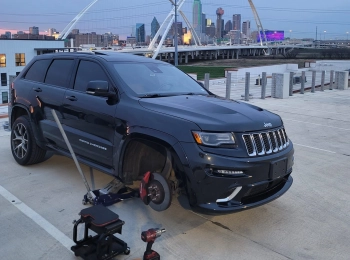The five main types of electric vehicles are Battery Electric Vehicles (BEVs), Plug-In Hybrid Electric Vehicles (PHEVs), Hybrid Electric Vehicles (HEVs), Fuel Cell Electric Vehicles (FCEVs), and Extended-Range Electric Vehicles (EREVs). Each one combines power and efficiency in different ways, giving drivers options that fit daily commutes, long road trips, or eco-friendly goals.
Electric vehicles have moved from being experimental to becoming part of everyday roads. Knowing the differences between these five categories helps you understand how they work, their benefits, and which one matches your lifestyle best. Whether your priority is saving on fuel, lowering emissions, or balancing both gas and electricity, this guide will walk you through everything in detail.
Table of Contents
1. Battery Electric Vehicles (BEVs)
A Battery Electric Vehicle, often called a “pure EV,” runs completely on electricity. These cars have no gasoline engine, no exhaust pipe, and no fuel tank. Instead, they rely on a large battery pack that powers one or more electric motors.
Examples: Tesla Model 3, Nissan Leaf, Chevrolet Bolt, Hyundai Ioniq 5.
How They Work:
You plug BEVs into a home charging station or public charging network. The battery stores electricity, which powers the motor to move the car.
Benefits for Drivers:
- Zero tailpipe emissions – cleanest option for the environment.
- Lower operating costs – electricity is cheaper than gas.
- Fewer moving parts – reduced maintenance compared to gas cars.
- Smooth, quiet driving experience.
Challenges:
- Limited driving range compared to gas cars (though improving).
- Charging infrastructure may not be convenient in every area.
- Longer refueling time compared to a quick gas fill-up.
Best For: Drivers with access to home or workplace charging, city commuters, and eco-conscious owners who want to eliminate gas completely.
2. Plug-In Hybrid Electric Vehicles (PHEVs)
A Plug-In Hybrid Electric Vehicle has both a gasoline engine and a rechargeable battery. Unlike standard hybrids, PHEVs can run on electricity alone for short distances before switching to gas.
Examples: Toyota Prius Prime, Ford Escape PHEV, Hyundai Tucson Plug-In.
How They Work:
You can charge the battery by plugging it into an outlet or charging station. Once the battery is empty, the car automatically switches to gasoline power.
Benefits for Drivers:
- Flexible – use electricity for daily short trips, gas for long road trips.
- Lower fuel costs – many drivers use little or no gas for local driving.
- Reduced emissions compared to standard gas cars.
Challenges:
- More expensive than traditional hybrids.
- Smaller battery means limited electric-only range (usually 20–50 miles).
- Heavier because they carry both an engine and a battery.
Best For: Drivers who want the environmental and cost benefits of electricity but don’t want to worry about charging availability during longer trips.
3. Hybrid Electric Vehicles (HEVs)
A Hybrid Electric Vehicle combines a gasoline engine with a small electric motor and battery. Unlike PHEVs, you cannot plug in HEVs. Instead, the battery charges itself through regenerative braking and the gas engine.
Examples: Toyota Prius, Honda Accord Hybrid, Hyundai Elantra Hybrid.
How They Work:
The car automatically switches between gas and electric power depending on speed and driving conditions. At low speeds, the electric motor helps reduce fuel use. At higher speeds, the gas engine takes over.
Benefits for Drivers:
- Improved fuel efficiency compared to standard gas cars.
- No need to plug in or charge – the system works automatically.
- Familiar driving experience for people new to EVs.
Challenges:
- Still rely heavily on gasoline.
- Lower environmental benefits compared to BEVs or PHEVs.
- Maintenance costs may be higher than standard gas cars because of dual systems.
4. Fuel Cell Electric Vehicles (FCEVs)
Fuel Cell Electric Vehicles use hydrogen instead of gasoline. They generate electricity on board by combining hydrogen from the tank with oxygen from the air, producing only water vapor as exhaust.
Examples: Toyota Mirai, Hyundai Nexo, Honda Clarity Fuel Cell.
How They Work:
You fill up with compressed hydrogen at a fueling station, which takes about the same time as pumping gas. The fuel cell generates electricity that powers the motor.
Benefits for Drivers:
- Zero emissions – only water vapor comes out of the tailpipe.
- Quick refueling – similar to gas, faster than battery charging.
- Longer range than most BEVs.
Challenges:
- Very limited hydrogen fueling stations (mainly in California, Japan, and parts of Europe).
- High purchase costs.
- Hydrogen production is not always green, depending on how it’s sourced.
Best For: Drivers in regions with hydrogen fueling infrastructure who want zero emissions without the charging delays of BEVs.
5. Extended-Range Electric Vehicles (EREVs)
Extended-Range Electric Vehicles are similar to BEVs but include a small gasoline engine that acts as a generator. The gas engine doesn’t directly power the wheels – it simply recharges the battery when it gets low.
Examples: BMW i3 REx, older Chevrolet Volt models.
How They Work:
The car drives like a BEV until the battery is nearly empty. Then, the gas generator kicks in to create electricity, extending the range.
Benefits for Drivers:
- Electric driving most of the time.
- Peace of mind – gas generator prevents range anxiety.
- Lower emissions than standard gas cars.
Challenges:
- Becoming less common as battery ranges improve.
- Still includes a gas engine, so not fully emission-free.
- Often more expensive than standard hybrids.
Best For: Drivers who like the idea of full-time electric driving but want backup power for long trips without relying only on charging stations.
Comparing the 5 Types of Electric Vehicles
| EV Type | Power Source | Charging Needed | Driving Range | Best Benefit |
| BEV | Battery only | Yes | 150–400+ miles | Zero emissions |
| PHEV | Battery + Gas | Yes | 20–50 miles on battery, then gas | Flexible short & long trips |
| HEV | Gas + Small Battery | No | Similar to gas, more efficient | Better fuel economy |
| FCEV | Hydrogen | Hydrogen fueling | 300–400+ miles | Quick refueling, zero emissions |
| EREV | Battery + Gas Generator | Yes (battery), gas optional | Electric range plus backup generator | No range anxiety |
The Future of Electric Vehicles
As technology improves, the differences between EV types are becoming less pronounced. Batteries are lasting longer, charging networks are expanding, and hydrogen fueling may grow in select regions. For most drivers today, BEVs and PHEVs offer the best balance of availability, affordability, and real-world practicality.
Governments and automakers are pushing toward an electric future. Many countries plan to phase out gasoline-only cars in the next two decades. That means investing in an EV today not only saves money and emissions but also prepares you for the road ahead.
Conclusion
The five types of electric vehicles are BEVs, PHEVs, HEVs, FCEVs, and EREVs. Each serves different needs. Whether you want zero emissions, better fuel economy, or the flexibility of both gas and electric power, there is an option that fits your lifestyle. Choosing the right type comes down to your daily driving habits and access to charging or fueling. Whatever you pick, switching to an EV means lower running costs, cleaner driving, and a step toward a more sustainable future.
FAQs
What are the five main types of electric vehicles?
The five types are Battery Electric Vehicles (BEVs), Plug-In Hybrid Electric Vehicles (PHEVs), Hybrid Electric Vehicles (HEVs), Fuel Cell Electric Vehicles (FCEVs), and Extended-Range Electric Vehicles (EREVs).
What type of EV is fully electric with no gas engine?
Battery Electric Vehicles run only on electricity stored in a battery. They have no gas engine, no exhaust, and produce zero tailpipe emissions.
Which electric vehicle does not need to be plugged in?
Hybrid Electric Vehicles (HEVs) do not need charging. Their small battery is recharged by the gas engine and regenerative braking during driving.
What is the difference between a hybrid and a plug-in hybrid?
A hybrid recharges its battery while driving, while a plug-in hybrid can be charged at home or a station and drive short distances on electric power alone.
Which EV is best for long-distance driving?
Plug-in hybrids and extended-range EVs are great for long trips because they combine electricity and gasoline, reducing range anxiety.
What is a fuel cell electric vehicle?
A Fuel Cell Electric Vehicle (FCEV) runs on hydrogen, creating electricity inside the car to power the motor. Its only emission is water vapor.
Which type of electric car saves the most on fuel?
Battery Electric Vehicles save the most since they don’t use gasoline at all. Charging with electricity is usually much cheaper than refueling with gas.
What type of EV is best if I can’t install home charging?
Hybrids are best if you cannot install home charging, since they recharge automatically. Plug-in hybrids also work but need occasional charging.









Leave a Reply